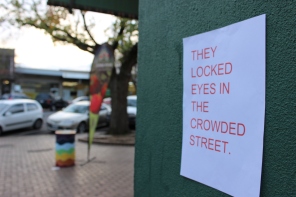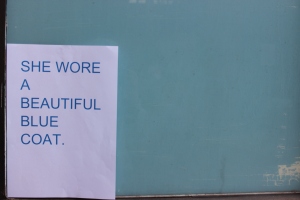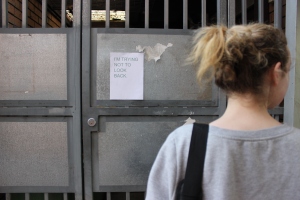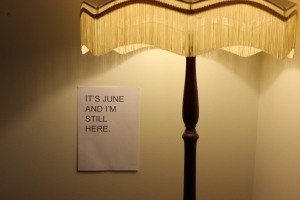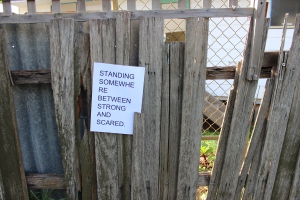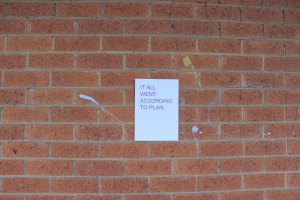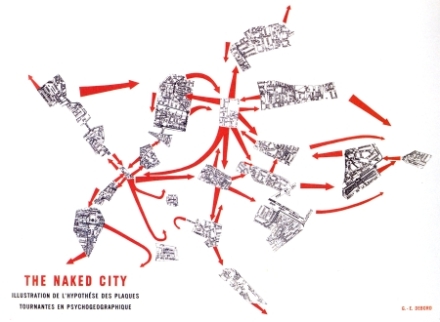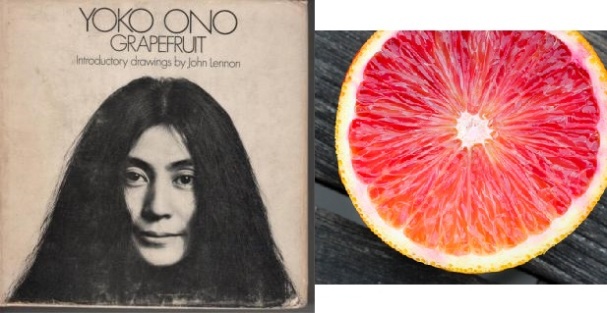![IMG_3172[1]](https://lipstickspoon.files.wordpress.com/2014/06/img_31721.jpg?w=225&h=300)
As required for the self-portrait exercise from Week 4, ‘The Artist as the Subject’, I presented a series of journal entries and accompanying photographs from one week in my life. Inspired by different measures of visual culture in the arts, notably John Berger’s Ways of Seeing and Erica Scourti’s “Life in Ad Words”, I wanted my final portfolio pieces to be tightly compressed, while allowing space for an expansive cross medium. Through my own research, I was further influenced by the artistic layout of personal statement in a public arena. By hanging word cut outs in the outside environment, it was as if as presented by blogger Anna Ladd’s portfolio piece ‘Things I Told the Internet, but Didn’t Tell My Mom’, and began working segments of my own writings: thoughts, experiences and observations. Following the format of Ernest Hemingway’s famous ‘six word novel’: ‘Baby Shoes: For Sale, Never Worn’, in the field of flash fiction, I narrowed my journal entries down to small extracts, and compressed the diary from several pages into 7 six-word sentences. Crossing private thought with a public platform, I allocated my posters to various spots around my hometown, places I walk by every day but have never truly engaged with. By leaving personal statements outside for everyone to see, I aim to highlight the juncture of privacy and revelation, mirroring the way we readily use the internet to declare personal information without really taking into consideration the exposure that is out of our control. Through this piece I hope to put into perspective the cross currents of communication through seven separate stories that may be read as one, pieced together and understood however one may please, according to context and arrangement, the way people understand each other or even themselves, according to communication, perspective and circumstance.

